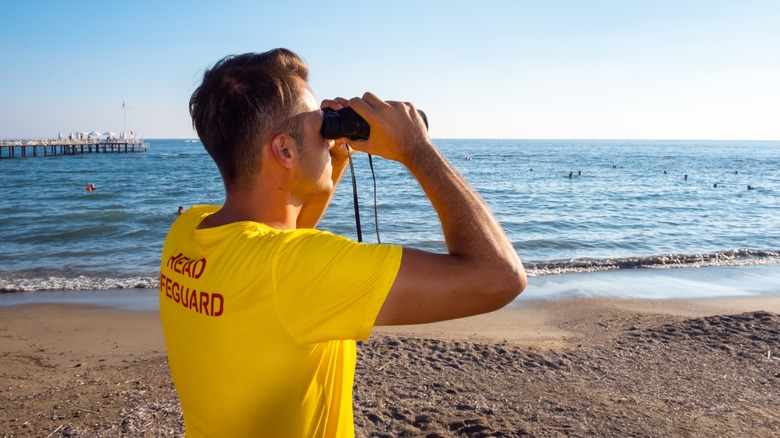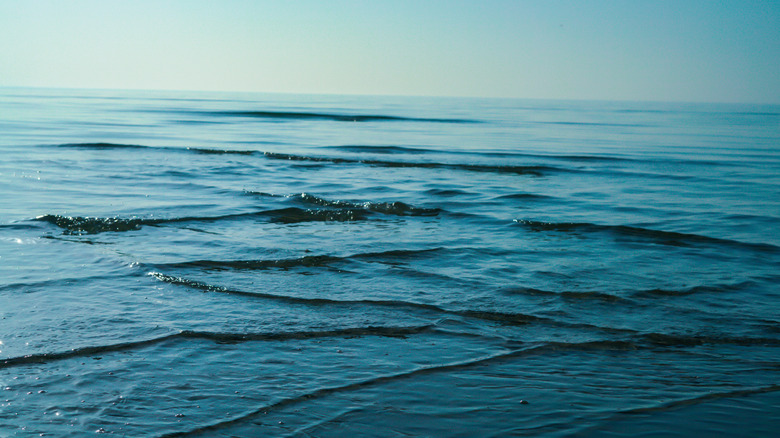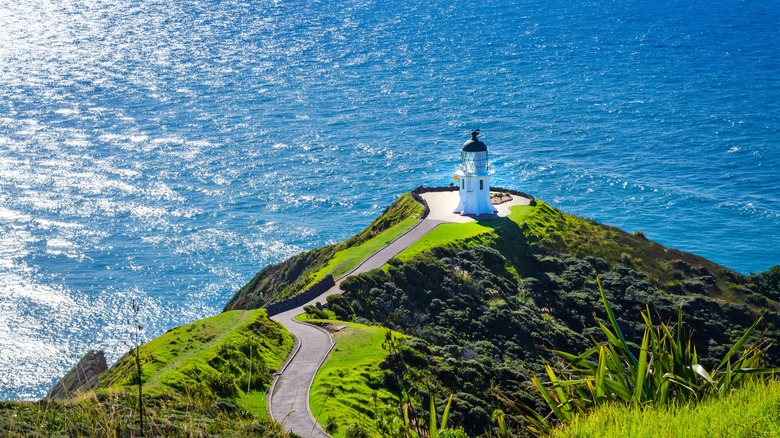You've Heard Of Rip Currents But Do You Know About The Danger Of Square Waves?
Taking time away from a busy schedule to enjoy a vacation can be a treat for travelers. While some adventurers head towards vibrant cityscapes, others set their sights on shorelines instead. It's estimated that only 15% of travelers book vacation rentals in urban areas annually, leaving plenty of explorers looking forward to spending time on the sand.
For all of the fun and relaxation a seaside trip can provide travelers, spending time at the beach also requires a thorough knowledge of water safety. A simple swim in the ocean can quickly turn dangerous when events like rip currents become a part of the experience. Tens of thousands of swimmers have to be rescued from rip currents on U.S. coastlines each year, but an even more severe threat in the water that travelers may be less aware of is what is known as square waves.
Sometimes referred to as a "cross sea," square waves aren't as common to witness as rip currents. However, they can prove to be much more disastrous for boats and swimmers alike when they do occur. Much as the name indicates, square waves are typically identified by the square checkerboard pattern that's created in the water when swell systems combine.
Recognizing the unique dangers of square waves
The National Oceanic and Atmospheric Administration estimates at least 100 fatalities a year are caused by rip currents. These fast-moving channels of water can pull swimmers out to sea at a rate of up to eight feet per second. Rip currents are common along the West Coast, East Coast, and Gulf Coast of the U.S. and make up more than 80% of surf beach lifeguard rescues.
While rip currents pose a very real and lethal threat to swimmers, the unique conditions that cause square waves make them dangerous for ships and boats as well. A typical wave runs parallel to the shoreline and is created as wind transfers energy to the surface creating a disturbance. When square waves are created, they're the result of two weather systems colliding.
This type of collision results in waves from the swells of each system that run in opposite directions to one another. The surface of the water takes on a unique square pattern but the waters below are deceptively violent. This is because square waves create both rip currents under the surface of the water as well as waves that can reach up to 10 feet high. Navigating these conditions can be tricky and even prove impossible in some cases for large boats, swimmers, and surfers caught unaware.
Locations where square waves are likely to form
Square waves are considered rare compared to rip currents. However, there are places where travelers are more likely to encounter this dangerous development. Knowing where square waves occur is important in keeping yourself safe during a seaside adventure.
Places where two oceans meet at a peninsular of land provide conditions ripe for square wave development. This is because swells naturally come in from varying angles and break off around the landmass. One destination notorious for producing square waves is the Île de Ré in France. Thousands of tourists head to the lighthouse here each year to observe square waves from a safe distance above the surface.
At the northern end of New Zealand, the Pacific Ocean and the Tasman Sea find a volatile meeting place. This makes Cape Reinga another top destination for the development of square waves throughout the year. Similarly, Wednesday Island in Australia is a hot spot for square waves thanks to its placement at the collision point of the Coral Sea and the Arafura Sea. Beaches off of Tel Aviv, Israel have also been reported as places where visitors encounter square waves with relative frequency.
While observing square waves in action can be thrilling, it's important to understand the dangers they pose ahead of your travels. Staying out of the water is imperative when square waves are present. They may be less common than rip currents, but they're just as important to take seriously.


